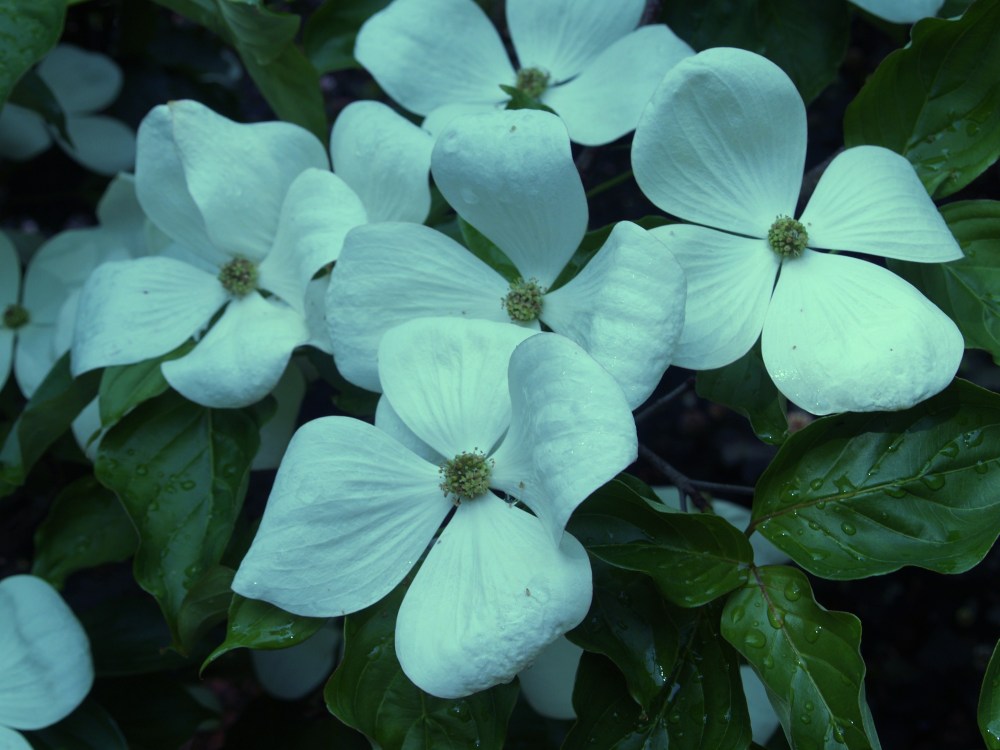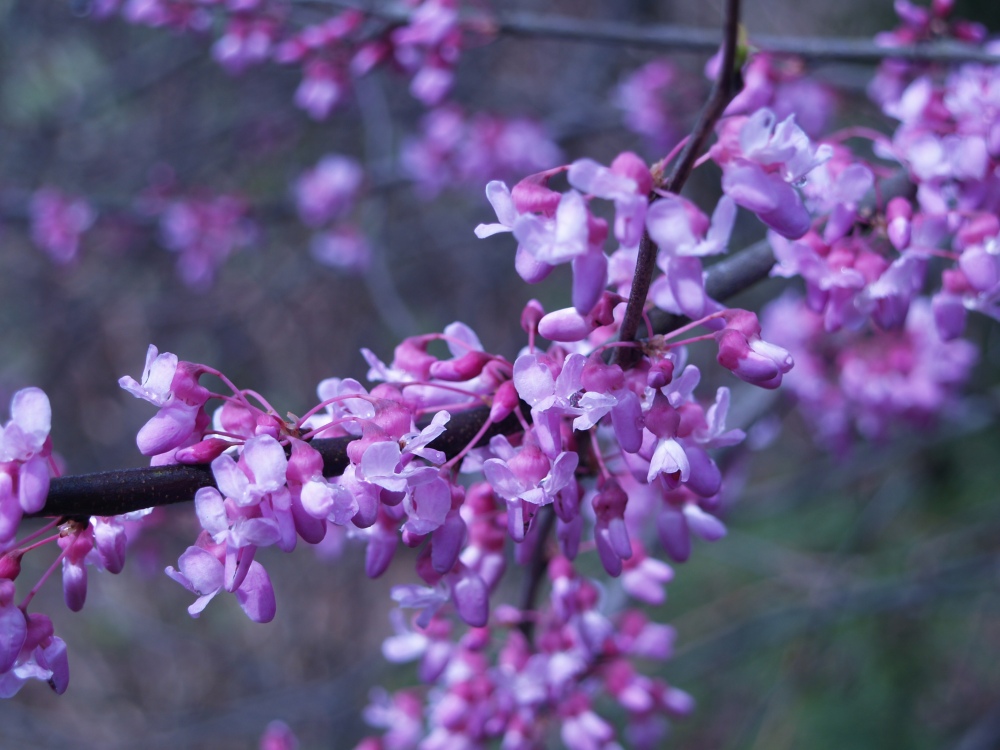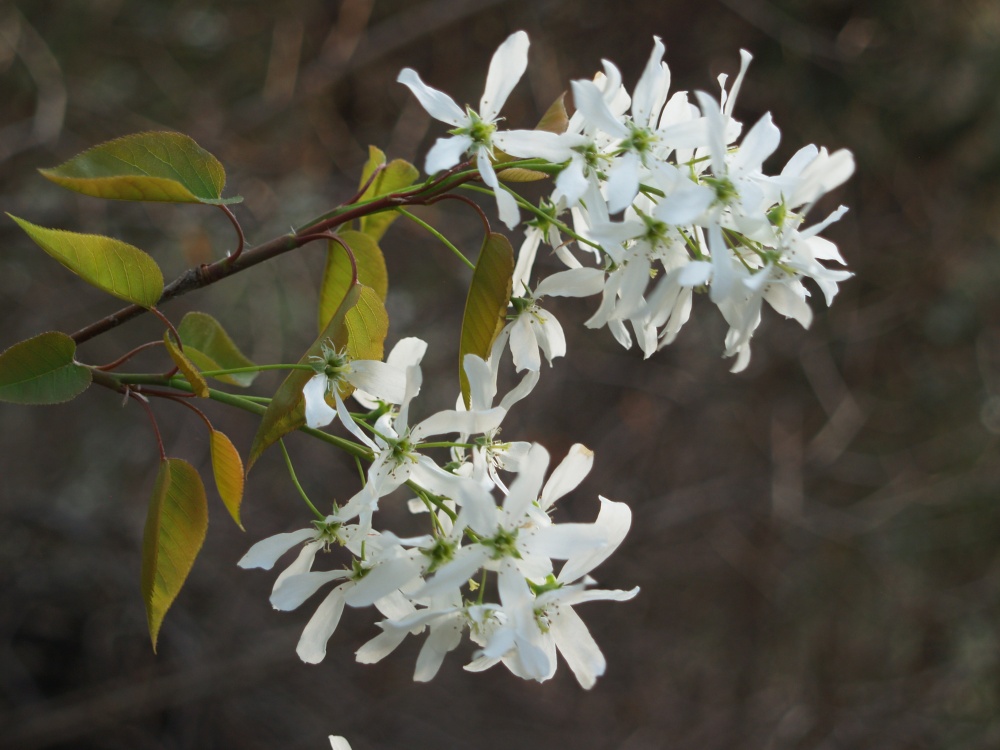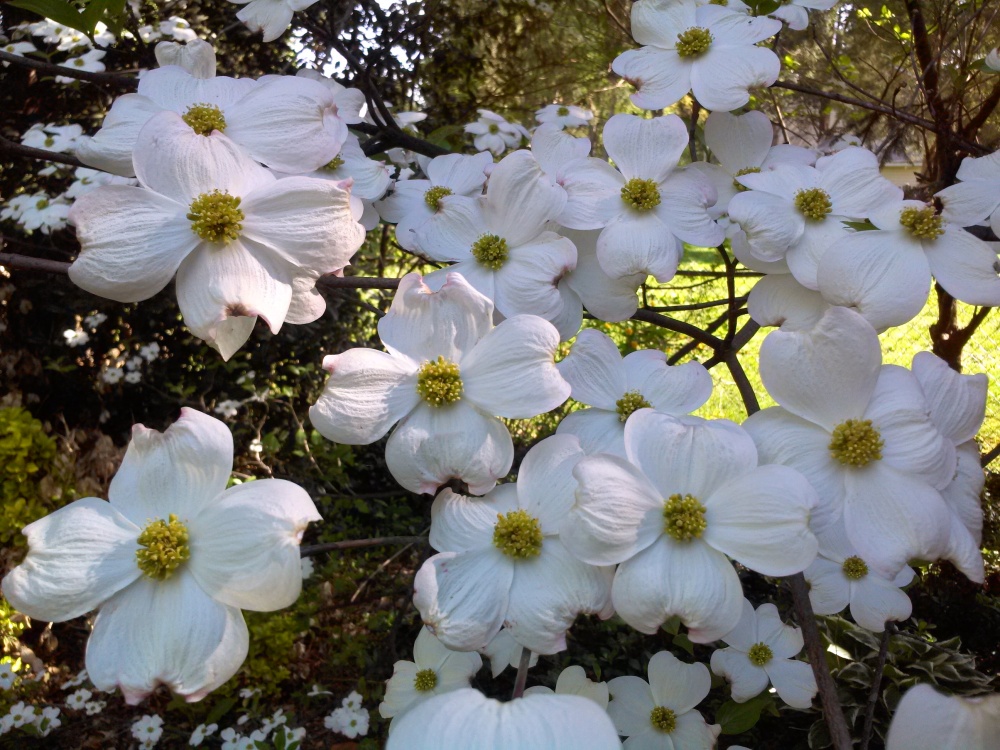Of two hybrid ‘Venus’ dogwoods (below) planted several years ago, one has flourished while the other does no more than survive. The vigorously growing (and flowering) dogwood is tucked between taller, more established trees, but it is located so that it is shaded only from the late evening sun. Here, the positioning emulates the understory environment where our native dogwood (Cornus florida) is most successful.
Though native dogwoods are often found growing beneath a tall canopy of maples and tulip poplars, trees that are deeply shaded are thinly branched and flower sparsely. Healthy, flowering dogwoods are found as an understory at the forest’s edge, where more sunlight is available. A simple observation of two sides of a forest lined highway in mid April will show flowering dogwoods on the sunny side, and few or none on the other.
This observation will also demonstrate that redbuds (Cercis canadensis, above) are less particular about the amount of sunlight, so there will be purple-pink flowers on both sides of the highway, though twenty feet into the forest, flowering is also sporadic. The serviceberry (Amelanchier canadensis, below), our other April flowering native understory tree, is seen in fewer numbers, but it also flowers at the wood’s edge.
The lesson for the gardener, as verified by experience in this garden, is that dogwoods (below) and other understory flowering trees require more sun, part sun rather than part shade. The result of the grand idea to scatter dogwoods and redbuds through the wooded backyard is usually disappointing, as I witness in this garden with ‘Venus’ and a shaded Chinese dogwood that rarely flowers.
Dogwoods, redbuds, and serviceberry in this garden are planted against taller trees, and all flower on the sunnier side, with few or no blooms on the more shaded side. So (and this should be obvious at this point), flowering trees should be planted with as much exposure to the sun as possible. If it is possible to shade trees from the late afternoon summer sun, all the better.
I have found this true too – more sun = more blooms. But, lots more sun also might be the cause my neighbor’s (in full sun and thick with blooms) to look stunted in size despite all the TLC it gets.
Ray
If I was wise enough to be able to plan such things, flowering plants would be screened only from the late afternoon summer sun. Instead, a few accidents show these benefits.